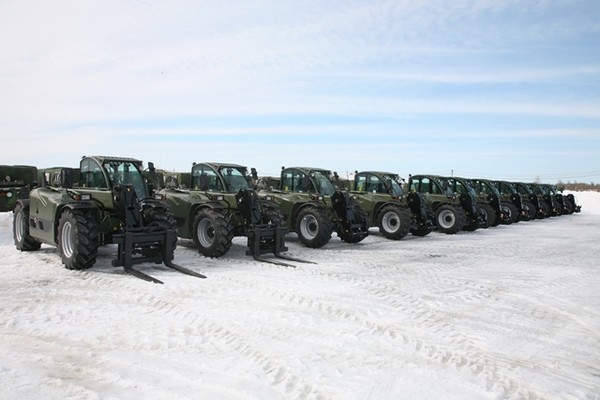
Faresin Telescopic Handlers: technological innovation for a full range
Mondo Macchina/Machinery World met Roberto Zanetti, the head of marketing for the Vicenza manufacturer, for an update on the market for materials movement machinery to gain an understanding of how product innovations are created by Faresin Industries
Faresin Industries, one of the most strongly recognized brand names in the sector of mixer wagons and telescopic handlers, recently attracted attention for the manufacturer's achievements in systems developed for the use of bioenergy and especially the biogas production chain. In the materials movement sector the company located in Breganze, near Vicenza, turns out a range of differentiated machines built for agriculture as well as industrial applications including such specialized models as customized telescopic handlers for the armed forces. Renato Zanetti, the Faresin commercial and marketing director, discussed these issues with Mondo Macchina/Machinery World.
Faresin has a large number of models of numerous machines on the market, machines which are structurally different one from another or are they variations applied to a basic structure shared by all this machinery?
The philosophy of our industry is to optimize components to the highest for economies of scale in improved performance, quality and the reliability of the machine. The range is broken down to satisfy all the needs of the market and at present 35% of the components are shared.
What are the strong points of the Faresin range?
If we consider the manufacturing process, I would say the metal construction facilities and our new paint plant, these are works we do in house. When we rely on outside suppliers we take great care in selecting them, considering only brand names with maximum reliability and working at an international level. On the other hand, as far as our machines are concerned, having a complete range is a factor which, in an increasingly dynamic and competitive sector, can make the difference.
At Fieragricola you presented two new telescopics, the VPS and the VPSe, equipped with new generation technologies. How are your research and experimental activities organized?
Our research begins with an analysis of the market and what it requires. Our consolidated relations with our customers, those who use mixer wagons every day – and we're the world's biggest manufacturers of these machines – and the telescopic handlers in our plants ensure for us information feedback. And this is precisely the starting point for designing and creating new product innovations. Our vision is totally oriented to the future. For our buyers we want to offer latest generation technologies which are also, and above all, user friendly.
The development of agriculture requires, in an ever more emphatic way, high tech solutions. What are the new frontiers for the telescopic handler sector and how can the construction and technological profile of these machines change in the coming years?
On this front, the most interesting growth and development factors are linked to optimizing the consumption of energy for applications in the farming environment. The objective is to maximize power, looking for more and more competitive energy sources which always correspond to the needs in this sector.
The Italian market is hard pressed to get out of the recession prevailing over the past six years. Can new mechanization demand come from maintenance of the land and multifunctional farming activities to revitalize traditional machinery types in a market which appears certain to remain stagnant?
Over the short run we're not expecting big signals of a reversal of the trend but in spite of this we feel that the primary sector offers significant growth margins for the sector of telescopics. Instead for construction, the market trend in large part is determined by initiatives promoted at the national level, especially by those tied to support for the reconversion of industrial areas as well as the recovery of these areas.








